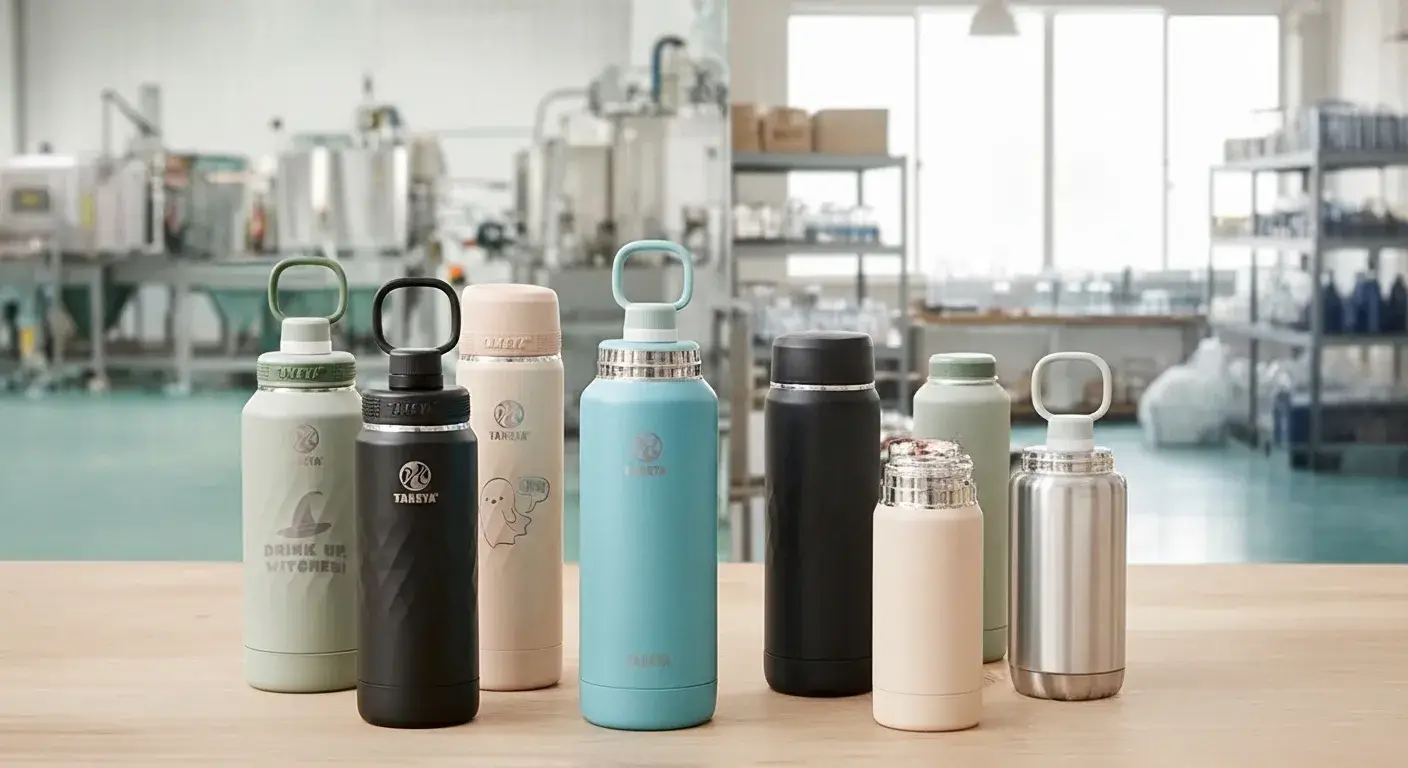
Struggling to trust product origins? Confusion over "Made in Japan" or "Made in China" labels is causing hesitation in eco-conscious buyers.
Takeya water bottles are designed in the USA but primarily manufactured in China, with select components or premium lines produced in Japan or inspected in the US.
Unpacking Takeya's supply chain in 2025 reveals ethical choices, hidden costs, and clarity buyers deserve. Let's dive into the truth behind the brand.
What's the Origin Story Behind Takeya and Its Bottles?
Takeya was once a niche Japanese brand. But how did it become a global hydration name in the US wellness market?
Takeya was founded in Japan in 19611 and expanded to the US in 2008, combining Japanese engineering with California wellness culture.
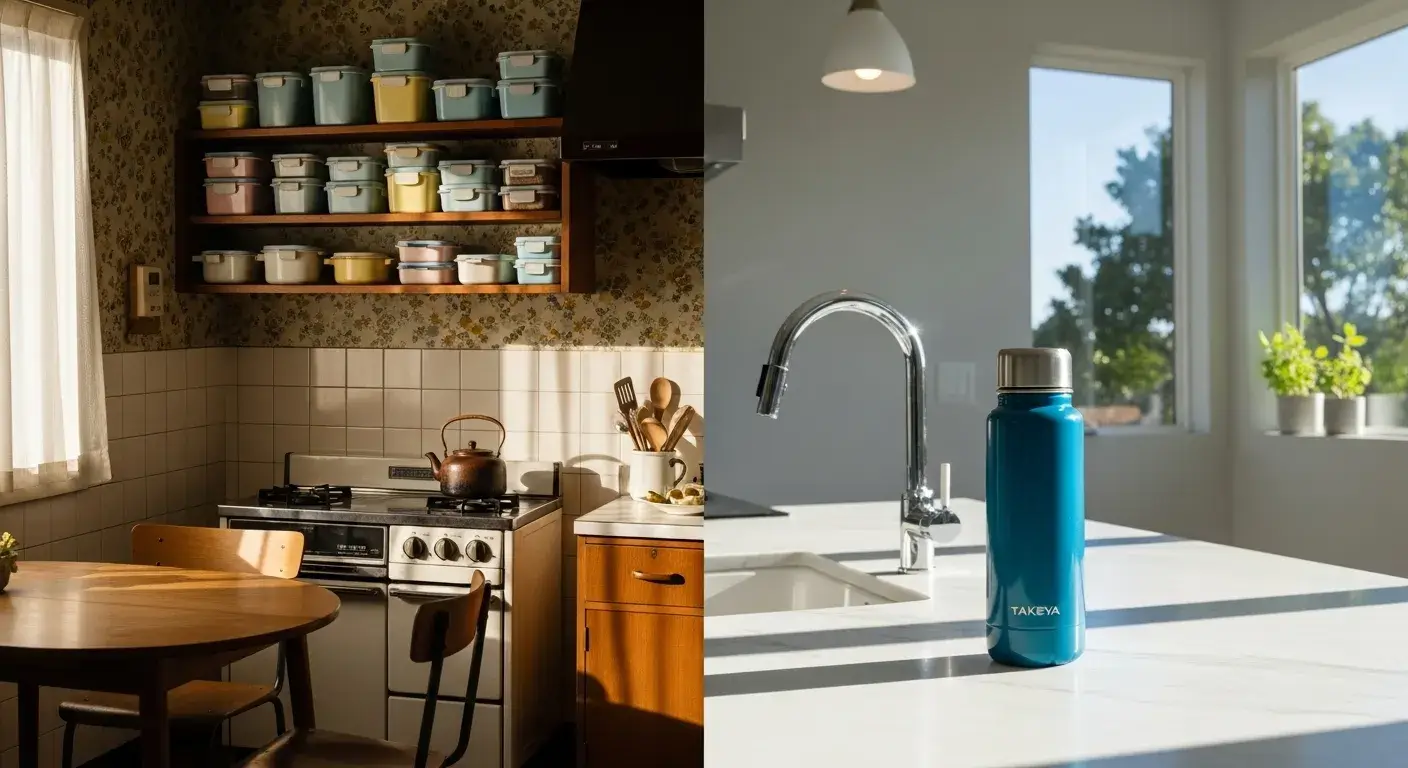
From Plastic to Premium Steel: The Evolution
Takeya started as a household goods manufacturer in Japan. It specialized in airtight containers before pivoting toward hydration products. The company entered the US market with a simple mission: to provide stylish, leak-proof, and health-safe water bottles.
In 2008, Takeya USA was launched in Southern California by Lisa Lee and Shinsuke Tsugawa. They reimagined Japanese precision into a lifestyle product line—introducing the Takeya Actives™ bottle series. The designs embraced double-wall vacuum insulation, ergonomic lids, and vibrant finishes.
Over the years, production moved closer to manufacturing hubs, but the brand still holds tight to its Japanese innovation roots.
"Our heritage comes from Japan. Our spirit lives in California." — Takeya USA
Where Are Takeya Water Bottles Primarily Manufactured Today?
With multiple product lines, is Takeya still made in Japan—or has everything moved to China?
In 2025, most Takeya stainless steel water bottles are manufactured in China, while some glass and premium plastic models are still produced in Japan.
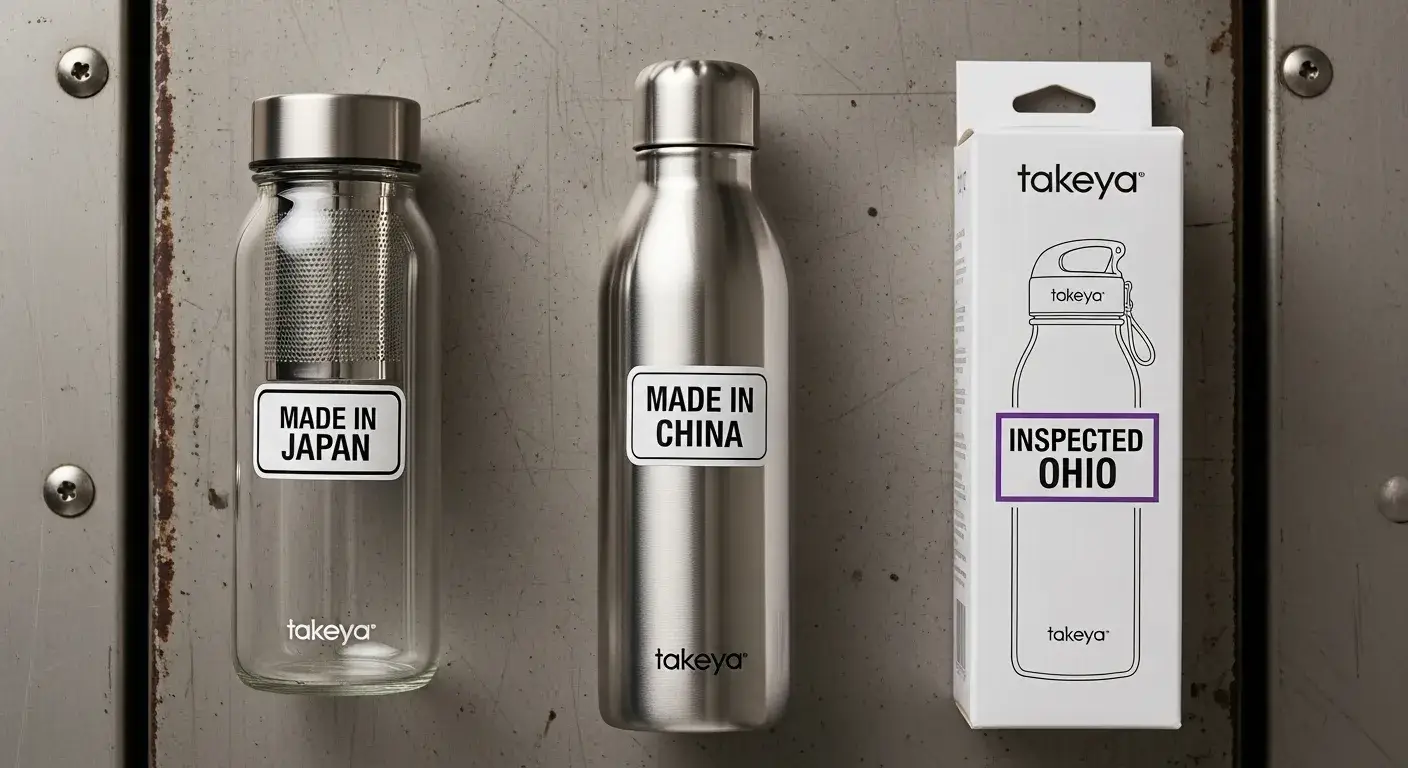
China's Role in Production
Takeya's high-volume stainless steel bottles—like the 24oz and 32oz Actives™ series—are made in Chinese factories. These facilities are audited under ISO9001 and BSCI certifications2. Their high-capacity assembly lines allow for automated laser-cutting, powder coating, and vacuum insulation.
According to supply chain reports, over 80% of Takeya's stainless steel products now come from China due to scaling needs and pricing advantages.
Meanwhile, select glass infuser bottles and BPA-free plastic models are still produced in Japan. Some US-bound products undergo final inspections or customizations in Ohio.
| Production Region | Product Type | Purpose |
|---|---|---|
| China | Stainless steel bottles | Mass production & cost efficiency |
| Japan | Glass bottles, plastic lids | Heritage and quality perception |
| USA (Ohio) | Custom engraving, packaging | Final quality check & personalization |
This global approach blends cost-effective production with quality controls and heritage preservation.
How Does Takeya's Global Supply Chain Work for Bottle Production?
You see "Designed in California" and "Made in China" on the same bottle. What does that actually mean?
Takeya sources raw materials globally, manufactures primarily in China, inspects in Japan or the USA, and ships from Ohio for final delivery.
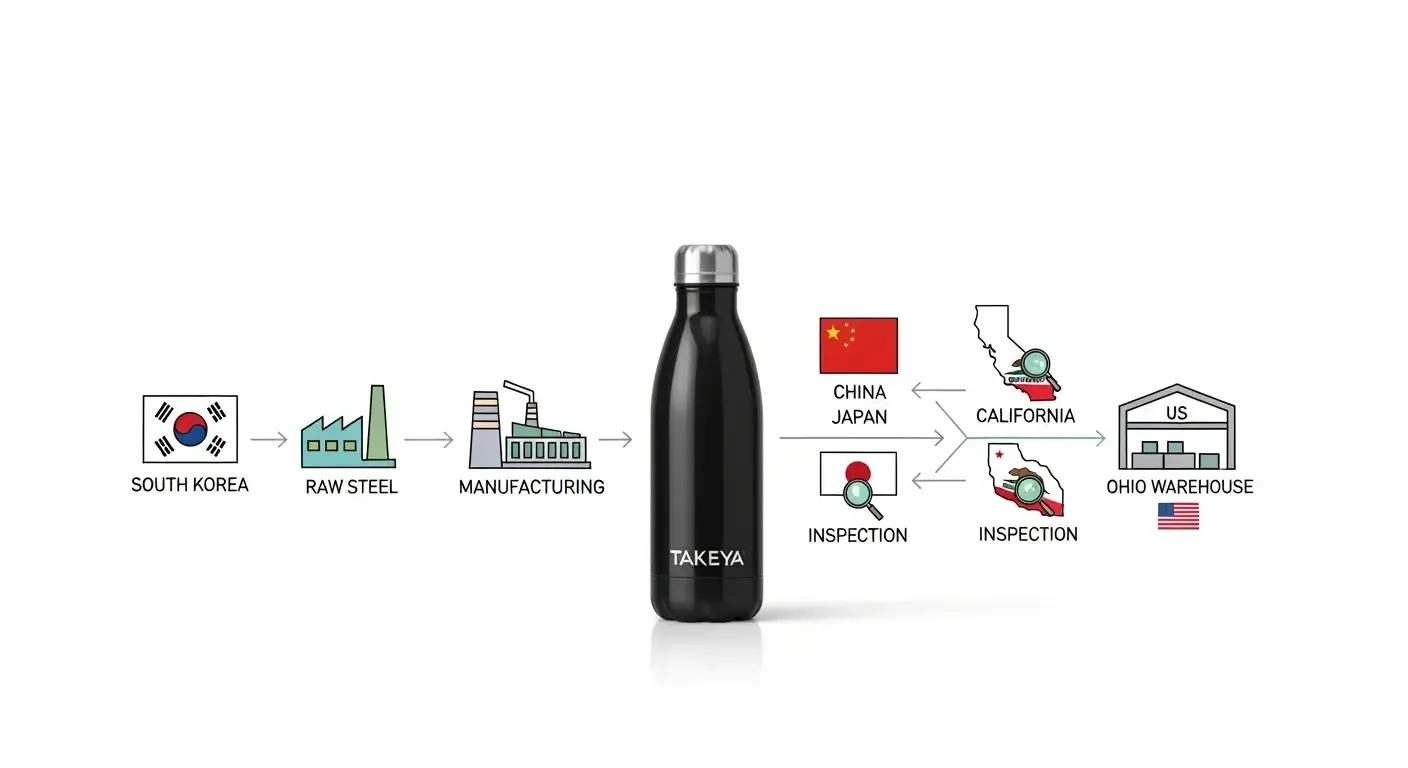
Understanding the Journey: From Steel to Shelf
Takeya's supply chain reflects modern efficiency:
- Raw Materials: Food-grade 18/8 stainless steel3 from South Korea or the US.
- Manufacturing: Shaping, welding, and vacuum sealing take place in China's high-tech factories.
- Assembly: Silicone lids and sleeves added in China. For specialty batches, final touches happen in Japan or California.
- Distribution: Products are packed and shipped from a US warehouse in Ohio, where personalized engraving and branding are handled.
In 2025, about 10% of production began shifting to Vietnam to reduce shipping time and tariff impacts.
This blend of global sourcing ensures fast lead times, controlled costs, and wide customization options—all while balancing sustainability and efficiency.
What Quality Controls Does Takeya Use in Its Manufacturing Facilities?
If Takeya bottles are made overseas, how can we trust the quality?
Takeya enforces strict quality control using ISO/BSCI-certified factories4, food-safe materials, and advanced defect-detection systems.
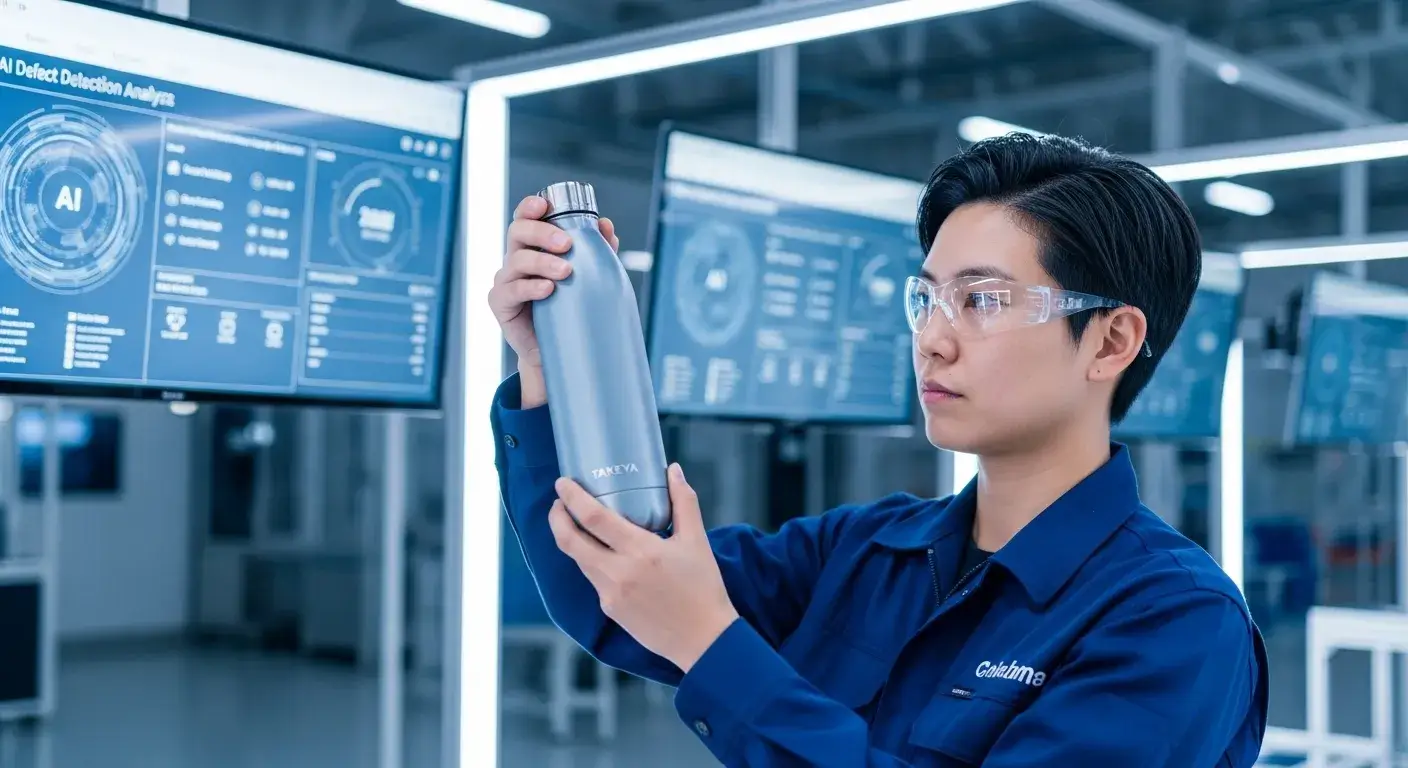
Why Takeya Bottles Rarely Fail
Takeya employs multiple quality protocols at each step:
- Raw Material Testing: Stainless steel is checked for corrosion resistance, lead-free composition, and strength.
- Facility Audits: All partner factories are ISO 9001-certified and pass BSCI social responsibility audits.
- Defect Detection: AI visual systems flag welding errors, lid tightness, and insulation gaps before packaging.
- Performance Testing: Bottles undergo drop tests (from 3ft), leak tests, and insulation tests (for 24hr cold retention).
| Control Type | Method Used | Result |
|---|---|---|
| Material Safety | FDA/BPA/lead-free testing | Food-safe certification |
| Manufacturing Audit | ISO9001, BSCI compliance | Less than 1% defect rate |
| Durability Test | Drop, seal, and thermal testing | Lifetime warranty on leaks |
These systems reduce production issues, giving users confidence in every sip.
Are Any Takeya Bottles Still Made in Japan, and What's Changed?
Some buyers love the "Made in Japan" promise—but is that still valid today?
Yes, Takeya still manufactures certain premium lines in Japan, but stainless steel bottles are now mostly made in China for cost and scale.
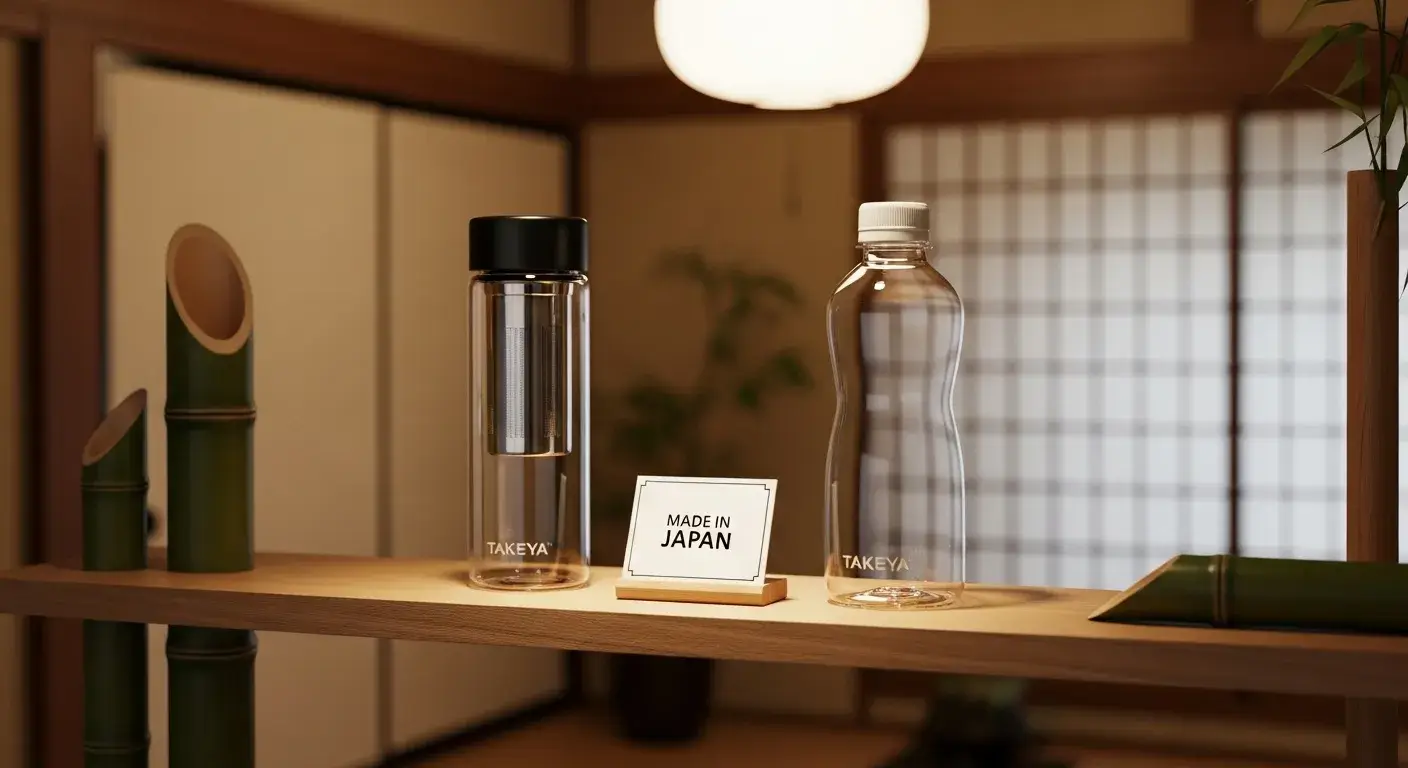
Japan-Made Lines Still Exist (But They're Niche)
Select models—especially glass infuser bottles and high-end BPA-free plastic bottles—are made in Japan for heritage and brand identity reasons.
However, demand for insulated stainless steel bottles surged by 30% since 2020, forcing the company to shift those lines to China. It allowed them to lower costs and keep retail prices around $30-35 instead of $50+.
| Year | Japan-Made Product Share | China-Made Share |
|---|---|---|
| 2010 | 80% | 20% |
| 2025 | 15% | 80% |
While "Made in Japan" still exists for collectors and minimalists, everyday Takeya bottles are mostly built in modern Chinese facilities with international oversight.
Why Should You Care About Where Takeya Bottles Are Made?
Does the factory location really matter if the bottle works well?
Yes—where a bottle is made affects ethics, price, environmental impact, and how much you really trust the brand's values.
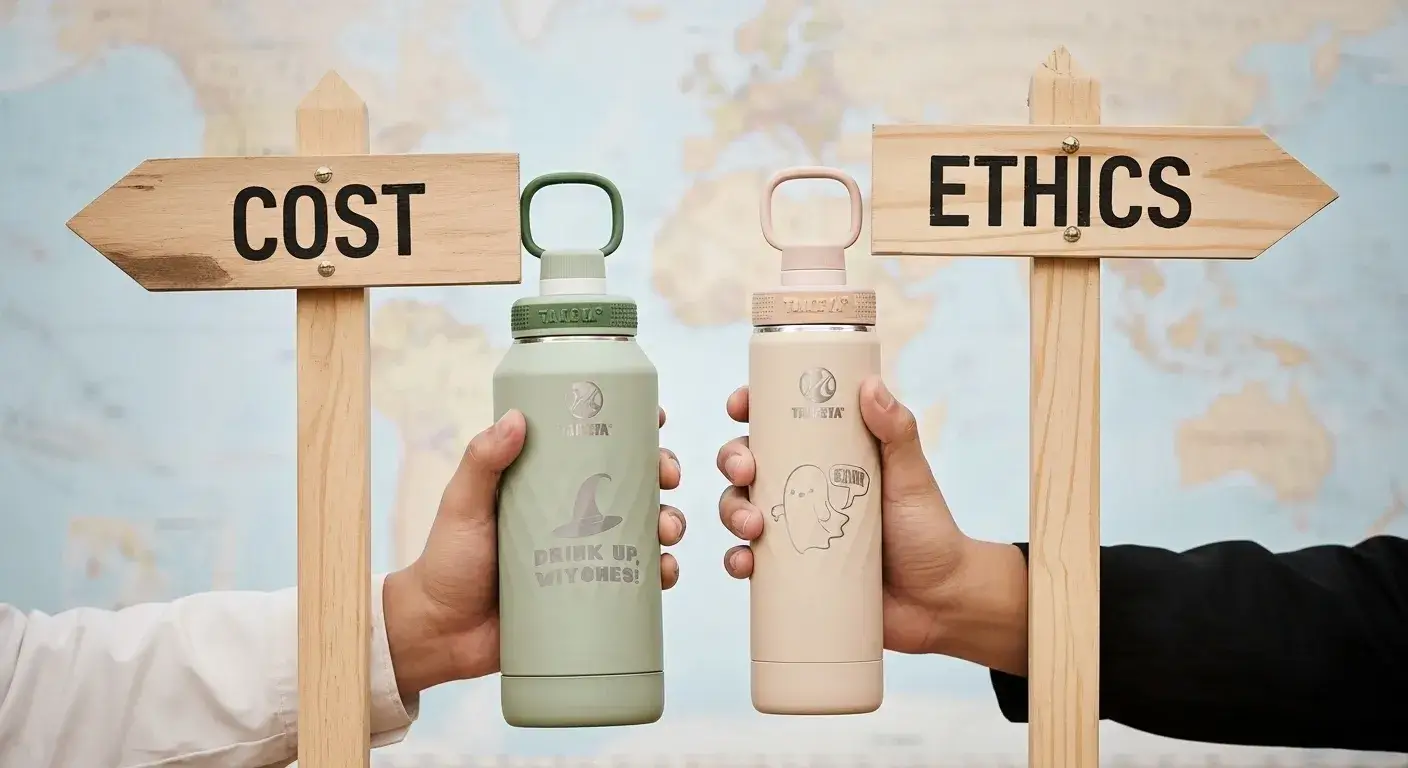
Location Tells a Bigger Story
Here's why origin matters:
- Ethics: Knowing factory locations helps verify labor conditions. China factories can vary in worker treatment unless audited. Takeya uses BSCI-certified facilities.
- Environment: Products made closer to the market (e.g., Vietnam or US) reduce emissions from long-distance shipping.
- Price Impact: Tariffs in 2025 added $2–$5 per unit on China-made goods, nudging some brands to shift production.
- Transparency: Clear sourcing builds trust. Misleading "Japanese bottle" claims can create backlash when customers discover "Made in China" underneath.
Informed customers support brands with honest sourcing—and reward those who put quality over marketing tricks.
Conclusion
Takeya bottles blend Japanese design with global manufacturing, primarily in China, to balance affordability, quality, and wellness lifestyle.
FAQs
Are Takeya bottles made in China or Japan?
Mostly in China for stainless steel bottles; some plastic and glass lines still come from Japan.
Are Takeya bottles BPA-free?
Yes, all bottles are certified BPA-free and use food-safe materials.
Is there a fully USA-made Takeya bottle?
No. While some customization and distribution happen in the US, manufacturing is overseas.
Why do some labels say Japan but the box says China?
"Designed in Japan" refers to heritage. Manufacturing and final assembly often occur in China for cost reasons.
How do Takeya bottles compare to Stanley or Hydro Flask?
Takeya is more affordable and lightweight but doesn't offer full USA-made options like Stanley does in premium lines.
-
Learn about Takeya's company history from their official website, including their 65-year Japanese heritage of precision manufacturing that began in 1961, their 2008 expansion to Southern California, and how they merged Japanese quality engineering with California wellness culture to create innovative hydration products. ↩
-
Understand ISO 9001 certification, the globally recognized quality management system standard that helps organizations demonstrate their ability to consistently provide products meeting customer and regulatory requirements, with over 1 million certificates issued worldwide ensuring effective processes and quality control. ↩
-
Discover the properties of food-grade 18/8 stainless steel (18% chromium, 8% nickel), which provides excellent corrosion resistance, durability, and safety for food and beverage contact, meeting FDA standards for non-toxic materials that don't leach chemicals into drinks. ↩
-
Learn about ISO 9001 quality management systems from the American Society for Quality, including how this international standard specifies requirements for establishing, implementing, and maintaining quality control processes that ensure consistent product quality, customer satisfaction, and continuous improvement in manufacturing facilities. ↩

